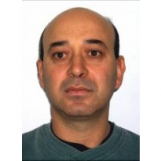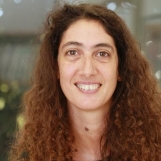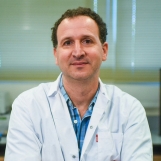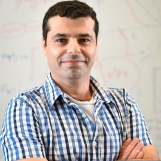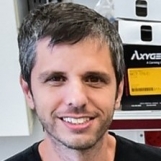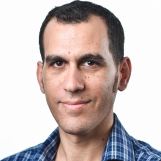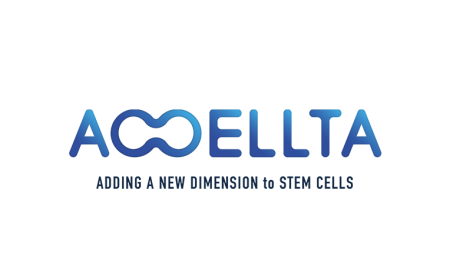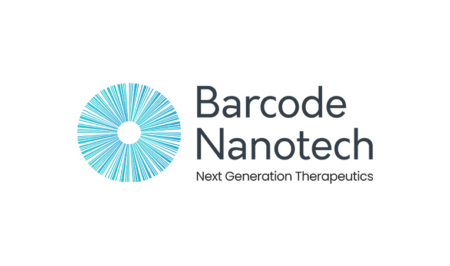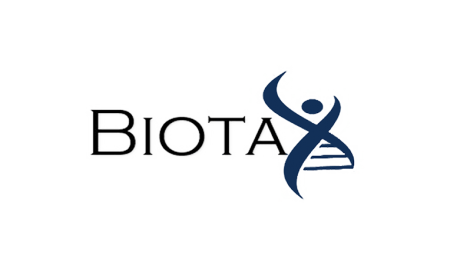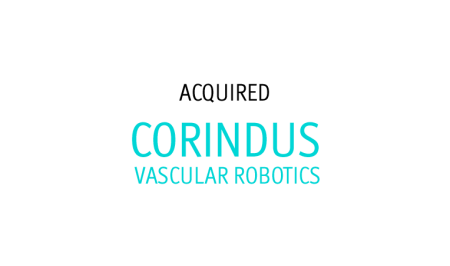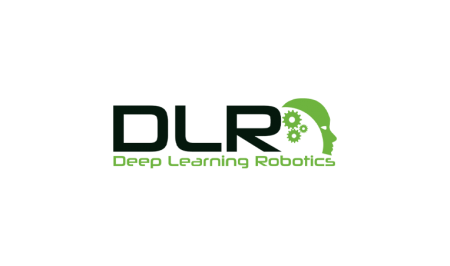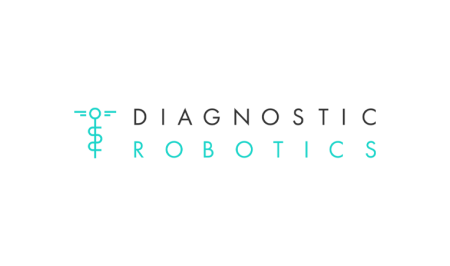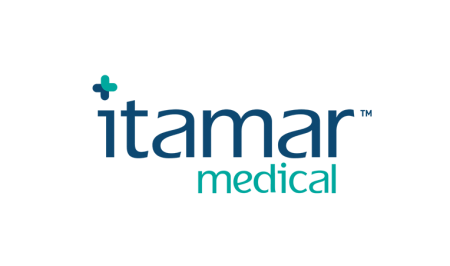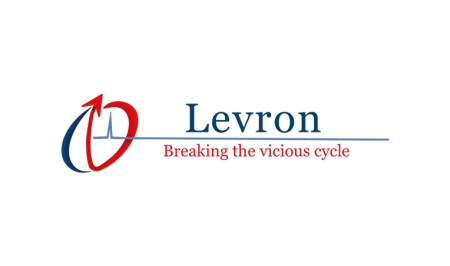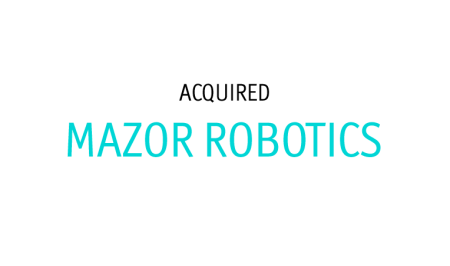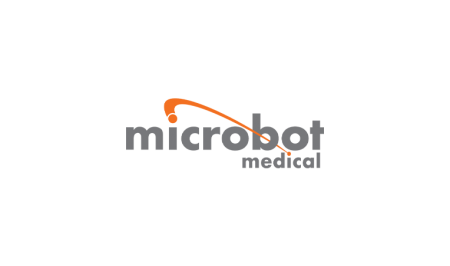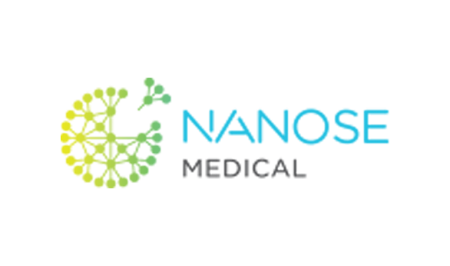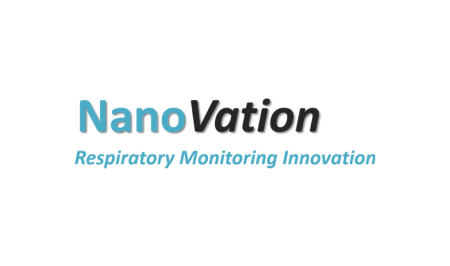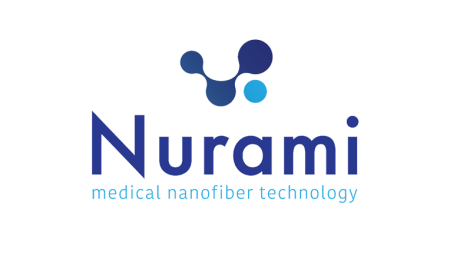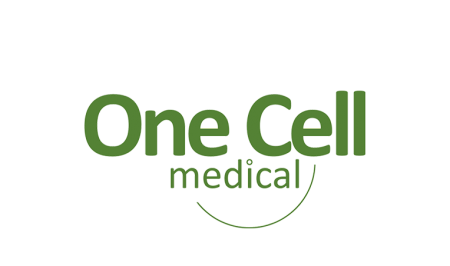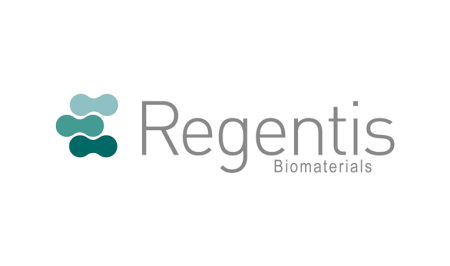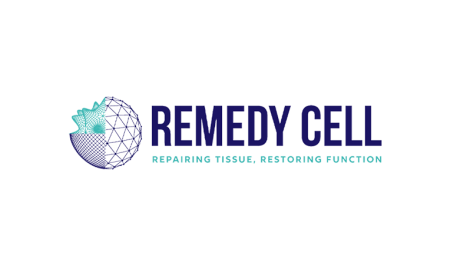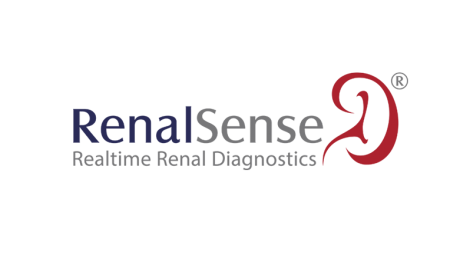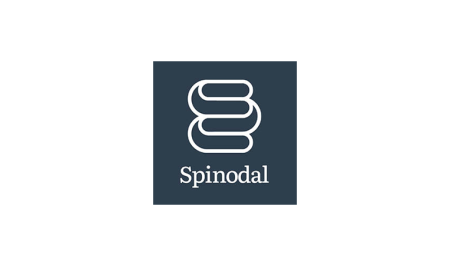3D printed biodegradable implants
In severe nerve injuries, major gaps are formed within the tissue and the axons in the spinal cord fail to regenerate. This failure is related to the formation of cystic cavities within the injury site. Unlike healthy extra-cellular matrix, the...
Categories:
Medical Devices|Pharmaceuticals and Biotechnology
3D Printed spacer fabrics (3DSF)
Knitted Spacer Fabrics (SF, AKA spacer mesh) have numerous uses in the fashion, automobile, safety industries, and more. Nevertheless, current SFs manufacturing suffers from some substantial limitations. The knitting machines are huge and very expensive, and the process requires a...
Categories:
Automation, Mobility and Aerospace|Chemistry and Materials|Information and Computer Science|Medical Devices
Microtia, which refers to a small and malformed external ear, occurs with an incidence of 1 to 10 per 10,000 births. Among surgical techniques of microtia repair, autologous reconstruction using costal cartilage is the most widely accepted. Autologous reconstruction using...
Categories:
Medical Devices
3D scaffolds of embedded olfactory ensheathing cells
Olfactory bulb (OB)-derived cells include fibroblasts, astrocytes, and olfactory ensheathing cells (OECs). OECs are a distinctive type of glia that secrete neurotrophic factors and form myelin sheaths around axons projecting from the olfactory mucosa into the OB of the central...
Categories:
Medical Devices
A bioink formulation for 3D printing of skeletal muscle
Over the past century, revolutionary techniques were developed allowing organ and tissue transplantation from human donors. Although such therapies have been extremely valuable and lifesaving, they are far from being sustainable on a global scale. Despite these shortcomings, allogeneic transplantations...
Categories:
Chemistry and Materials|Medical Devices
A flap for de-novo tissue regeneration
Abdominal wall defects caused by severe trauma, burn or cancer ablation involve significant tissue loss (i.e.: the skin, subcutis, muscle and fascia layers), often requiring surgical reconstruction. Various techniques have been used in the final phase of management of abdominal wall...
Categories:
Medical Devices
A miniature electron spin resonance probehead for transcutaneous oxygen monitoring
Oxygen concentration in the skin (denoted as transcutaneous oxygen - TcpO2) has a significant diagnostic and therapeutic importance in many clinical situations. It is being used for monitoring the condition and assessment of healing potential of chronic wounds, diabetic feet,...
Categories:
Medical Devices
Additively manufactured turbine-based engines and ventilators
In the modern world, unmanned aerial vehicles (UAV) capture an ever-increasing part of our daily operations. This is especially true for small scale UAVs, which are commonly powered by micro-gas turbines. These micro jet engines have thrust rating below 1...
Categories:
Automation, Mobility and Aerospace|Chemistry and Materials|Medical Devices|Security & Defense
Adhesive composition reinforced with short fibers
Pancreatic surgery and specifically partial pancreaticoduodenectomy for malignant indication are generally accompanied by high complication and mortality rates. The poor results seen following the Whipple operation are mainly due to leakage from the pancreatoenteric anastomosis. Surgical sealants play a crucial...
Categories:
Chemistry and Materials|Medical Devices
AI analysis for ECG telemedicine
Diagnosis of the cardiac condition involves the analysis of an ECG image through a visual examination of the printed physical output of the recording. The technology enables an automated analysis employing innovative deep-learning methods. The research, enables immediate analysis of...
Categories:
Medical Devices
AI-driven platform for diagnosis, risk prediction and management of cardiac conditions
Machine Learning (ML) driven cardiology platform that develops a cloud-based, ML-powered ECG analysis tools. It supports the diagnosis, risk prediction and management of cardiac conditions. The platform enables clinicians and technicians to perform ECG analysis faster and with better performance...
Categories:
Medical Devices
An ultra-sensitive nanopore biosensors for detection of KRAS mutations in colorectal cancer
One of the main challenges impeding genomic-based disease identification and characterization stems from the fact that related analytes, such as pathogens genes and cancer biomarkers, are present in extremely low concentrations in biomedical samples. Thus, currently, most clinical genomic identification approaches...
Categories:
Medical Devices|Pharmaceuticals and Biotechnology
Aneurysm are blood filled saccular lesions located on bends and bifurcations of arteries. Cerebral aneurysms, for example, occur in about 5% of the population where 0.2% rupture with a mortality rate of nearly 50% . The available treatment can be...
Categories:
Medical Devices
Ankle-foot Orthosis with adjustable load bearing
Millions of individuals unable to bear weight on their foot or ankle due to conditions such as fractures, sprains, surgeries, and diabetic ulcers rely on crutches. However, crutches come with significant drawbacks: they are slow, energetically inefficient, functionally limiting, and...
Categories:
Medical Devices
New antibiotics are a necessity in today’s modern medicine due to the increasing prevalence of antibiotic resistant strains of pathogenic bacteria. There are many attempts at providing new antibiotic drugs by either modification of existing drugs or by finding new...
Categories:
Food and Agriculture|Medical Devices|Pharmaceuticals and Biotechnology
Assessment of uncertainty in deep neural nets predictions
Deep neural networks (DNN) are currently used in wide range of computer vision and image processing tasks. Adopting DNN-based techniques for safety-critical clinical applications, such as MRI analysis and reconstruction, in which results inform diagnostic, prognostic, and interventional decisions in...
Categories:
Information and Computer Science|Medical Devices
Atrial fibrillation prediction
Prediction algorithm for Atrial Fibrillation risk based on novel algorithms that provide earlier more robust detection of AF risk and events based on ECG signal analysis. The technology is based on novel methods for analysis of HRV (Heart rate variability)...
Categories:
Information and Computer Science|Medical Devices
Automated MRE-based analysis of Crohn’s disease extent
To date, ileocolonoscopy is the reference standard for evaluating disease activity in Crohn's disease (CD). However, this is an invasive procedure that is, generally, poorly tolerated by the patient and which only allows for the mucosal surface to be visualized...
Categories:
Medical Devices
Biocompatible adhesive microneedle for tissue repair and sealing
Adhesion of soft tissues, as well as their sealing, are of great significance in the clinical and Medical fields. Closing wounds with tissue adhesives presents challenges, as well as a significant opportunity to revolutionize bleeding control and to heal....
Categories:
Medical Devices
Biocompatible tissue adhesive polymer
Tissue bioadhesives are widely used in dermatology, surgery rooms, and in the field. Despite their advantages over sutures and staples, currently available tissue glues are limited by their mechanical properties and toxicity. Here, a new approach is described for wound...
Categories:
Medical Devices
Biodegradable ureteral stent
Ureteral stents are widely used in urology, mainly to secure drainage of urine from the kidney to the bladder. Several weeks or months after insertion, these stents need to be removed by an in-office procedure. To avoid the unpleasant in-office...
Categories:
Medical Devices
Biological Scaffold for would healing
Devices and methods for the on site fabrication and/or implantation of different support structures (e.g., scaffolds) and therapeutic agents (biological and or pharmaceuticals) for the healing of compromised tissues, whereby the scaffolds and therapeutic agents are each tailored to achieve...
Categories:
Medical Devices
Biomarker monitoring for early treatment
BiomarkerFlow is a diagnostic platform that enables rapid, multiplexed detection of biomarkers through advanced computational microscopy and microfluidics. It provides a breakthrough alternative to conventional immunoassays, such as ELISA and ECLIA, by offering faster, more scalable, and cost-effective analysis with...
Categories:
Medical Devices|Physics and Electro-Optics
Biosurgery based on enzymatic collagenase
Overexpressed extracellular matrix (ECM) in liver fibrosis limits drug penetration into the tumor and is associated with poor prognosis. Collagen, a triple-helix protein, is the main structural component in such diseases. Collagen viscoelastic properties play a major role in constructing...
Categories:
Medical Devices|Pharmaceuticals and Biotechnology
Bone regeneration using a composite bone ECM graft
Bone defects resulting from trauma, infection, tumors or inherent genetic disorders pose a significant burden on healthcare systems. Bone regeneration requires the use of grafting materials such as bone autografts, which are currently considered the gold standard treatment. Nevertheless, their...
Categories:
Medical Devices
Brain modulation for immune system regulation (specific to the reward system)
We show in mice that through activation or inhibition of the dopaminergic neurons in the Ventral Tegmental Area (VTA) in the brain we can alter the immune response. We can control the activity of distinct immune cell lineages, and in...
Categories:
Medical Devices|Pharmaceuticals and Biotechnology
Cancer immunotherapy by nanoparticle-based magnetic support in T cells
Cancer immunotherapy shows poor clinical results in many cancer types. A potent suppressor mechanism is the deprivation of required metabolic nutrients from T cells. Tumors compete with T cells for the same essential nutrients including glucose and amino acids, and...
Categories:
Medical Devices|Pharmaceuticals and Biotechnology
Cell fusion or destruction using nanoparticles and laser
The present technology involves the use of nanoparticles and laser light to manipulate selected cells for cancer therapy, tissue regeneration and drug production. The invention describes a method for specific cell manipulation. Gold nanoparticles are coated by a layer of...
Categories:
Medical Devices|Pharmaceuticals and Biotechnology
Cell invasiveness is a major step in tumor metastasis therefore its evaluation is critical for prognosis of cancer progression and will affect treatment protocols. Currently, metastasis prognosis is based on subjective clinical judgment, patient characteristics, disease statistics, tumor shape/size, lymph-node...
Categories:
Medical Devices
CMOS ISFET sensitive detector
Ion sensitive field effect transistors (ISFET), are used to detect presence and concentrations of various species of ions in fluids into which they are placed. ISFETs have long been considered good candidates for providing small, fast, sensitive, accurate, and relatively...
Categories:
Information and Computer Science|Medical Devices
Coded aperture ultrasound detector
Optoacoustic tomography (OAT) offers the unique capability to image optical contrast deep in the tissue. While OAT can produce very detailed images of blood vessels and lipid deposition, making it a potential solution to many clinical challenges, it requires 1000’s...
Categories:
Medical Devices
Computer vision respiratory rate detection
Detection of breathing patterns and abnormalities utilizing a video camera. Analysis of video monitoring of chest movement during breathing provides data regarding the beating pattern and enables rapid response to changes. Advantages Detection of apnea, bradypnea, eupnea and tachypnea No...
Categories:
Information and Computer Science|Medical Devices
Detection of x-ray and gamma-ray photons
Detection of high energy photons (x-rays and gamma rays) is of great importance for applications in medical radiography, security inspection, radiation exposure monitoring, and high energy physics. Scintillation, which is the ability of certain materials to absorb high-energy (KeV scale)...
Categories:
Medical Devices|Physics and Electro-Optics
Determining responders to inflammatory bowel disease treatment
Current treatment of Inflammatory bowel diseases (IBDs) is an empiric process, which involves decisions based on the response to therapies by the average patient, without taking into account the basic differences between patients, their specific immune status at a given...
Categories:
Medical Devices|Pharmaceuticals and Biotechnology
Developing a novel powerful treatment for inflammatory diseases
Inflammatory bowel disease (IBD) can be debilitating, causing long-term, impaired gastrointestinal structure and function. Until now, no cure has been found and existing treatments can have strongly detrimental side effects. Iron is an essential nutrient that participates in many central...
Categories:
Food and Agriculture|Medical Devices|Pharmaceuticals and Biotechnology
Early detection of myocardial injury
Organ failure due to cardiovascular collapse is a leading cause of mortality in all the intensive cardiac units (ICUs). Myocardial injury is the most cardinal problem in this setting, and proper management of myocardial injury requires early detection. Missing the...
Categories:
Medical Devices
Electrospun-coated medical devices
Intubation-related morbidity is a well-known complication that usually involves the larynx and trachea. These problems are secondary to airway mucosal damage due to the presence of an endotracheal tube (ETT) which creates local pressure and pressure-like ulcer. The common clinical approach...
Categories:
Medical Devices
Elephant trunk (robotic mechanism with two degrees of freedom)
The present invention relates to the field of robotic actuated mechanisms, especially those having a high load lifting capability and light weight, such that they are capable of being stacked end-to-end to provide a hyper-redundant, high flexibility, long robotic arm....
Categories:
Automation, Mobility and Aerospace|Medical Devices
Explainable AI for COVID clasification in lung ultrasound images
Evaluation of Lung function is essential for the diagnosis and treatment of COVID patients. Ultrasound imaging is widely used and enables patient testing without moving the patient to an imaging facility. Determining patient treatment options and potential outcome in a...
Categories:
Medical Devices
Flow bioreactor device for monitoring cellular dynamics
Engineered 3D constructs have gained increased attention as in vitro tools for the study of cell–cell and cell–matrix interactions and are being explored for potential use as experimental models or therapeutic replacements of human tissues. Perfusion culture enhances oxygen and...
Categories:
Medical Devices
Flow routing to inhibit thrombosis in replacement heart valves
Valvular heart disease affects more than 100 million people worldwide and is associated with significant morbidity and mortality. There are two common types of surgical prosthetic heart valves: Mechanical Heart Valve (MHV) or the Biologically-inspired and derived valve (BHV). Valve...
Categories:
Medical Devices
Flexible and Adaptable Ankle Foot Orthosis (FAAFO) device is a patented technology designed to correct the walking style and ankle joint rotation trajectory during the gait for patients with foot lifting (dorsiflexion) and foot rotation upward (evertion) disabilities. The device...
Categories:
Medical Devices
Glaucoma diagnosis using a deep learning
Retinal imaging is widely available and enables affordable examination of the eyes. An optical coherence tomography (OCT) image, is a type of medical imaging technique that provides high-resolution, cross-sectional images of biological tissues, primarily in the eye. Digital fundus imaging...
Categories:
Medical Devices
Glucose and Lactate Continuous Monitoring
A great effort has been made to establish efficient electron transfer between electrodes and enzymes. The protein shell of the enzyme prevents electrical communication with electrodes, therefore, redox mediators are required for activation. present new methodology to establish efficient electron...
Categories:
Medical Devices|Sustainability and Energy
Harnessing synthetic optogenetic circuits for cancer therapy
Cancer immunotherapy is associated with on-target, off-tumor cytotoxicity or immune-related adverse events. Thus, light-based techniques, optogenetics, could allow “remote control” of immune responses within the body. Harnessing synthetic biology, optogenetics, the use of light to control the activity of specific...
Categories:
Medical Devices|Pharmaceuticals and Biotechnology
Heart rate variability analysis in mammalians
The time variation between consecutive heartbeats is commonly referred to as heart rate variability (HRV). Loss of complexity in HRV has been documented in several cardiovascular diseases and has been associated with an increase in morbidity and mortality. However, the...
Categories:
Medical Devices
High-resolution immune-aging profiling and cardiovascular risk
Over the past decade it has become apparent that the aging immune system has a fundamental role in a variety of chronic illness, including cardiovascular disease, cancer, neurodegeneration, musculoskeletal conditions and others. This places the immune system as an “aging...
Categories:
Medical Devices|Pharmaceuticals and Biotechnology
Hybrid polymer/lipid drug delivery system for treating oral cancers
Diseases of the oral cavity, including gum disorders, tooth decay and loss, and oral cancers, affect half of the human population. Specifically, incidences of oral cancers have risen by 35% over the past decade, with limited treatment modalities. Administering anti-cancer agents...
Categories:
Medical Devices
Hydrogel Microparticles fabrication system
Hydrogel microparticles (HMPs) are composed of 3D crosslinked polymers on a microscopic scale. Due to their special material properties, they have become an important class of pharmaceutical formulations in the biotechnology and biomedical field. Current methods to produce HMPs such...
Categories:
Chemistry and Materials|Medical Devices|Pharmaceuticals and Biotechnology
Implementation of the brutal cardiovascular insights for monitoring and treating heart failure patients
Heart failure is a pandemic in the western world. Dyspnea is the most cardinal symptom of heart failure. Dyspnea is associated with poor quality of life and causes frequent rehospitalization. The main problem is optimization of treatment and prevention of...
Categories:
Medical Devices
In vitro model of heart failure with preserved ejection fraction (HFpEF)
Heart failure with preserved ejection fraction (HFpEF) is a non-infectious pandemic affecting more than 1% of the general population and more than 10% of individuals over the age of 65. Currently, there are no effective treatments for HFpEF, mainly due...
Categories:
Medical Devices|Pharmaceuticals and Biotechnology
Linear motion in a cylinder using helical wave generator in elastic component. A large static radial holding force is formed in addition to the linear motion created by the elliptical movement. The motion is precise and requires low power engine...
Categories:
Medical Devices|Sustainability and Energy
Machine learning based single-molecule protein identification and quantification in nanochannels
This single-molecule sensing technology enables high-resolution identification and quantification of intact proteins using ultra-thin silicon nanochannels. Unlike conventional methods that rely on protein fragmentation or antibody-based capture, this novel technology utilizes chemo-selective dual-color labeling and electrophoretic separation to produce protein-specific...
Categories:
Medical Devices|Pharmaceuticals and Biotechnology
Methods of determining prognosis of sepsis and treating same
Sepsis is a severe life-threatening systemic inflammatory response related to infection that is responsible for more than 750,000 deaths annually in the US. It is a systemic inflammatory response syndrome (SIRS) with proven or probable infection of bacterial, fungal or...
Categories:
Medical Devices|Pharmaceuticals and Biotechnology
Microfluidic device that is designed to mimic the geometry of a section of the pulmonary acinus
Assessing deposition levels of air-borne particulate matter in the pulmonary acinus is of utmost importance for the pharmaceutical industry where such knowledge is required for development and quality validation of inhaled aerosolized drugs. In addition, deposition levels of toxic particles...
Categories:
Medical Devices|Pharmaceuticals and Biotechnology
Miniature surgical robot for knee arthroplasty
Arthritis is an increasing global problem with 10% of men and 18% of women having symptomatic osteoarthritis by the age of sixty. Consequently, the number of hip and knee replacements has increased rapidly in most OECD countries by 35% and...
Categories:
Medical Devices
Minimized Ultrasound Detectors
Ultrasound technology today is bulky and involves imaging probes with typical sizes of several centimeters. We have developed a new methodology for ultrasound imaging that can achieve extreme levels of miniaturization preserving high-resolution. This platform relies on optical technology for...
Categories:
Medical Devices|Physics and Electro-Optics
Mold-less molding additive manufacturing of volumetric objects
Traditional additive manufacturing methods such as 3D / 4D printing, Selective laser sintering (SLS), Stereolithography (SLA), Digital light process (DLP) and Volumetric additive manufacturing (VAM) are powerful tools for prototyping, but they’re limited by slow build speed and inhomogeneous mechanical...
Categories:
Automation, Mobility and Aerospace|Chemistry and Materials|Medical Devices|Sustainability and Energy
Molecular profiling of cancer by analysis of tissue histomorphology
Deep learning-based method for mapping critical receptors on cancer cells. Using digital images of biopsies taken from breast cancer patients, the new technology is expected to significantly improve personalized cancer treatments. The technology extracts molecular information from biopsy images that...
Categories:
Information and Computer Science|Medical Devices
Neural inhibition for treating bowel diseases
Inflammatory Bowel Disease (IBD) is a group of complex inflammatory disorders involving the gastrointestinal tract. It is a chronic condition with no medical cure, which commonly requires a lifetime of care. To this day, the mechanism of the disease's pathophysiology is...
Categories:
Medical Devices
Neurofeedback and induction of an immune response
Recently, a causal link between activation of the reward system and an immune function was reported in mice. This discovery holds great potential for improving personal health management, rationalizing the use of reward-related brain activation to enhance immune function. The...
Categories:
Medical Devices
Neuronal modulation to control the immune response
We show in mice that through activation or inhibition of the dopaminergic neurons in the Ventral Tegmental Area (VTA) in the brain we can alter the immune response. We can control the activity of distinct immune cell lineages, and in...
Categories:
Medical Devices|Pharmaceuticals and Biotechnology
Non-invasive imaging of metabolites by MRI
The new technology developed at the Technion can hyperpolarize metabolites with stables radicals created in their solid form, without the need to co-dissolve them with potentially toxic exogenous radicals, Magnetic Resonance Imaging (MRI) is the most informative of all medical...
Categories:
Chemistry and Materials|Medical Devices
Pacemaker signature in the ECG signal
Multiple Heart Rate variation analysis methods based on ECG and/or other signals are deployed in an algorithm which analyses SA node function in order to provide early warning for pacemaker issues. The technology enables early detection of Heart pacemaker issues...
Categories:
Medical Devices
Personalized clinical decision support for heart failure patients
Technology Heart failure remains a leading cause of mortality, with 20% of patients dying within one year of diagnosis and 50% within five years. Current treatment approaches are often generalized and fail to account for the complex interplay between heart...
Categories:
Medical Devices
Polymers to trap uremic toxins in WAK (Wearable artificial kidney)
Renal failure is a medical condition in which the kidneys fail to function adequately. The treatment given to patients suffering from renal failure are dialysis or kidney transplant. Different studies done in recent years, indicate that frequent and prolonged dialysis...
Categories:
Chemistry and Materials|Medical Devices
Protein-based polymers as the active layer in electronic devices
Using sustainable and affordable proteins as the basis for the formation of a new family of environmental polymers that are free-standing, soft, elastic, and most importantly, their electronic and ionic conductivity can be engineered. A special focus is given to...
Categories:
Chemistry and Materials|Medical Devices|Sustainability and Energy
Proteomics and genomics applications for electrokinetic focusing of in single-molecule sensor
The present patented technology is in the field of single-molecule detection in cases where the source sample is extremely dilute to the point where measurement is prohibited. Single molecule nanopore biosensors are integrated down-stream of a fluidic device that features...
Categories:
Medical Devices|Pharmaceuticals and Biotechnology
Rapid clinical antimicrobial susceptibility diagnostic system
Technology By the year 2050, antimicrobial resistance is predicted to cost the world over 100 trillion US$ cumulatively and claim 10 million lives per year. Thus, there is an urgent need to develop diagnostic methods that will help physicians to...
Categories:
Chemistry and Materials|Food and Agriculture|Medical Devices|Physics and Electro-Optics
Real time mitochondrial dimension measurements
Mitochondrial volume is correlated with cell function and internal cell processes. Changes in mitochondrial volume were associated with advanced states of cardiac disease. Thus, measurements of mitochondrial dimension deformations are important to the understanding of cell function and its deterioration....
Categories:
Medical Devices|Pharmaceuticals and Biotechnology
A robotic biomechanical shoe, which provides real-time feedback regarding forces acting on the foot of the user, in order to modify these forces in a corrective or diagnostic manner. The shoe comprises an insole (that can function independently) equipped with...
Categories:
Medical Devices
The self-contained operating table serves as a central integrated unit, replacing the radial layout that disperses cables and tubes in and outward. By consolidating equipment beneath and around the table, this compact design minimizes clutter (spaghetti effect), enhances safety, enable...
Categories:
Medical Devices
Self-activating light-generating proteins for synthetic cells
Optogenetics utilizes light-responsive biological components, mostly proteins, to activate cellular processes in engineered and natural cell systems. To optically control these processes, exposure to a light source is required. Therefore, the use of these proteins for therapeutic applications in vivo...
Categories:
Medical Devices|Pharmaceuticals and Biotechnology
Self-correcting non-invasive brain computer interfaces
Non-invasive Brain Computer Interfaces (BCIs) measure electroencephalography (EEG) potentials from the scalp and interpret them, through signal processing and machine learning, to make decisions and operate computers or other external devices. However, practical applications of BCIs are hampered due to...
Categories:
Information and Computer Science|Medical Devices
Self-Healing Multifunctional Wound Dressing
Traditional wound closure methods, including sutures, staples, and medical adhesives, have been widely used in the medical field. However, these methods often lead to complications due to mechanical mismatches with the skin's natural properties. These complications may include infection, damage...
Categories:
Chemistry and Materials|Medical Devices|Pharmaceuticals and Biotechnology
Semaphorin 3A as a diagnostic marker for urothelial cancer
Upper urinary tract carcinoma is a highly challenging disease to diagnose and follow. In contrast to bladder cancer, upper tract tumors are more difficult to diagnose and treat, due to the anatomical considerations and the special medical equipment that is...
Categories:
Medical Devices|Pharmaceuticals and Biotechnology
Separation and concentration of oxygen
Separation of oxygen from ambient air is currently done using cryogenic and sorption processes. Although the present technology is very common and currently most of the oxygen is being produced using these methods, cryogenic and sorption processes are high energy...
Categories:
Chemistry and Materials|Medical Devices
Skin-like sensing platform
Skin-like sensing platform for a full physical and chemical perception of the surrounding space - platform unit for detecting VOCs, temperature, pH, pressure and strain. The patches are based on sensor technology and self-healing and self repair polymeric substrate, electrodes...
Categories:
Chemistry and Materials|Medical Devices
Spectrally encoded imaging of tympanic membrane vibrations
According to the World Health Organization, over 5% (466 million) of the global population suffer from some sort of disabling hearing loss [1]. The annual cost of unaddressed hearing problems is estimated to be above $750 billion, mainly due to...
Categories:
Medical Devices|Physics and Electro-Optics
Sperm-induced cell-to-cell fusion as a male fertility diagnosis test
Approximately 15% of couples of reproductive age face fertility issues, with about a third attributed to male factors. Assisted Reproductive Techniques (ART), such as the conventional in vitro fertilization (IVF), and intracytoplasmic sperm injection (ICSI), are commonly employed to aid...
Categories:
Medical Devices|Pharmaceuticals and Biotechnology
Stable broad-spectrum decoy antivirals
This broad-spectrum antiviral nanoparticle technology leverages artificial intelligence (AI) and synthetic biology to develop decoy receptors that neutralize viruses before they infect human cells. These nanoparticles are composed of synthetic long non-coding RNA (slncRNA) molecules, which self-assemble with virus-targeting receptor...
Categories:
Medical Devices|Pharmaceuticals and Biotechnology
Superradiance cathodoluminescence electron microscope
Superfluorescence (or superradiance) refers to the emission of a collective burst of photons from densely packed emitters with long coherence times and narrow energy spectra. This phenomenon arises when emitters are coupled and correlated through the electromagnetic field. However, it...
Categories:
Chemistry and Materials|Medical Devices|Pharmaceuticals and Biotechnology
System and method for brain state classification
Paralysis caused by spinal cord injury, amyotrophic lateral sclerosis (LAS), brainstem stroke, cerebral palsy, and other disorders of the nervous system, has a severe impact on the lives of millions of individuals world-wide. While many assistive technologies have been developed...
Categories:
Medical Devices
System and method for electron spin resonance
This technology addresses a significant limitation in traditional MRI, which is excellent in damaging anatomical structures, but can say very little as to their physiological condition. An anatomical structure can be hypoxic, enflamed, even dead, yet none of that would...
Categories:
Medical Devices
Systems and methods for ultrasonic imaging
Medical ultrasound is a wide-spread imaging modality due to its high temporal resolution, lack of harmful radiation and cost-effectiveness, which distinguishes it from other modalities such as MRI and CT. High temporal resolution is highly desired in additional to spatial...
Categories:
Information and Computer Science|Medical Devices
Targeted delivery of inhalation medicine using magnetic particles
The lungs can be described as a dense tree, where the airways resemble branches, ending with raspberry-like acinar sacs. The acinar sacs are made of alveoli, the basic respiratory units of the lungs. The alveolar lumen is composed of a...
Categories:
Medical Devices|Pharmaceuticals and Biotechnology
Targeting UBB+1 for treating Alzheimer’s disease
As human life-span increases, prevalence of Alzheimer’s disease is soaring, reaching plague-like numbers worldwide. Alzheimer’s disease is a debilitating disease characterized by toxic protein build up in the brain that inevitably leads to dementia and loss of independence of the...
Categories:
Medical Devices|Pharmaceuticals and Biotechnology
The development of water in oleogel formulation as margarin replacement for bakery products
Fats are an important ingredient in many food products, contributing to food sensory and textural properties, providing energy and needed for metabolic pathways. The World Health Organization (WHO), and the Food and Agriculture Organization of the United Nations (FAO) recommend...
Categories:
Medical Devices
Fungal infections are a significant and growing public health problem. Currently, there are two main pharmacological anti-fungal treatments approved by the US Food and Drug Administration (FDA): (1) Amphotericin B. This drug is considered the "gold standard" of antifungal therapy....
Categories:
Medical Devices
Ultrafast microscopy and spectroscopy
Ptychography is a label free, high-contrast imaging technique for live cells using quantitative phase information. It is slow, requires precise preparation and complex systems and has limited resolution. These disadvantages can be overcome using ultrafast (single-shot) Ptychography which employs a...
Categories:
Medical Devices|Physics and Electro-Optics
Ultrasensitive RNA and mRNA quantification using nanopores as biosensors
The ability to sense and digitally count individual RNA and mRNA biomarkers holds a great potential for early diagnosis of a wide range of diseases from cancer to infectious diseases, including the recent SARS-CoV-2. The ‘gold-standard’ method for RNA molecules...
Categories:
Medical Devices|Pharmaceuticals and Biotechnology
Usage of cannabinoids for skin repair and regeneration
Manipulating the activity of the endocannabinoid system (ECS) offers therapeutic potential for a multitude of pathological conditions affecting humans. ECS receptors such as cannabinoid receptor 1 (CB1) and cannabinoid receptor 2 (CB2) have been found to be expressed in the...
Categories:
Medical Devices|Pharmaceuticals and Biotechnology
Waveguide-enhanced nanopore system for single-molecule detection
This waveguide-enhanced nanopore system enables solid-state, single-molecule detection with high sensitivity and optical precision. It integrates a metallic nanowell structure with a nanopore drilled into a silicon nitride membrane, combining optical waveguiding with ionic current sensing to achieve dual-mode detection....
Categories:
Medical Devices|Pharmaceuticals and Biotechnology
Wearable multimodality haptic feedback device
Virtual and Augmented Reality (VR and AR) are rapidly evolving fields, with applications in multiple domains, from gaming to medicine. While the visual and auditory feedback provided have progressed greatly, accompanying devices for haptic feedback are still limited in their...
Categories:
Automation, Mobility and Aerospace|Information and Computer Science|Medical Devices
Wearable stretchable microneedles-based platform
Microneedles devices to monitor materials in the interstitial fluid or inject materials to it are widely used for a range of medical conditions. Those are hollow microneedles as they need to pass fluids from and to the body. As such...
Categories:
Chemistry and Materials|Medical Devices
X-ray free imaging for adolescent scoliosis diagnosis
Adolescent Idiopathic Scoliosis (AIS) is a prevalent disease that currently requires radiographic imaging for accurate diagnosis and treatment planning. Much work has been done to identify and classify scoliosis using surface and topographic measurements, but current techniques rely on local...
Categories:
Medical Devices
X-ray radiation source system
High quality energy tunable X-ray sources are important for many applications in various fields of research such as medical diagnostics, material treatment and analysis, food security and many others. Current state-of the-art sources as synchrotron radiation and free-electron laser (FEL)...
Categories:
Medical Devices|Physics and Electro-Optics










